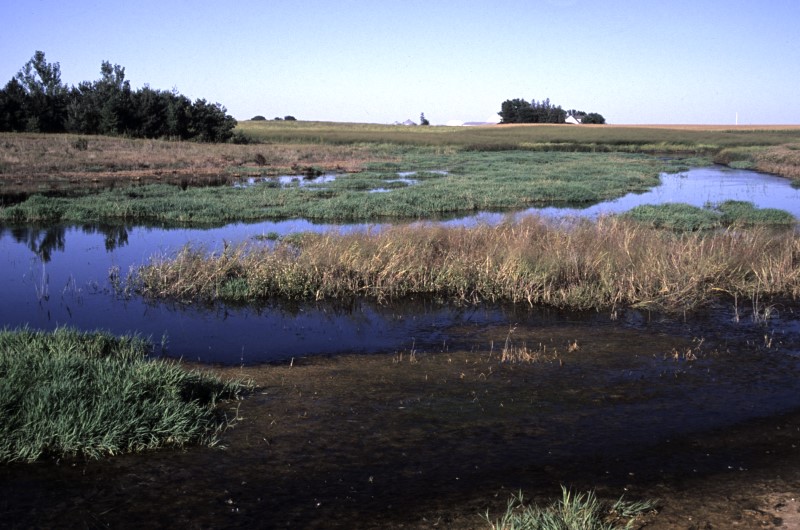League Asks USDA to Fix Conservation Rules
When Congress enacted a new Farm Bill in December 2018, it overhauled five major conservation programs that together provide $6 billion per year to help farmers and ranchers be better stewards of America’s land and water. In 2020, the U.S. Department of Agriculture (USDA) is finalizing rules that will determine how well the programs deliver conservation benefits.
As the League told USDA in comments filed on the agency’s proposed rules, USDA needs to fix the way it is running the Conservation Reserve Program (CRP), USDA’s oldest and largest conservation initiative. IWLA also said USDA should use the rules to deliver the broadest array of environmental benefits by putting soil health at the center of its conservation work with farmers.
In a letter signed by 68 League chapters and state divisions, the League told USDA it should: (1) restore CRP incentive payments for farmers willing to plant windbreaks, buffer strips along streams and wildlife habitat; (2) leverage state, local and private funds by making broader use of Conservation Reserve Enhancement Program (CREP) partnerships; and (3) reverse its decision to downgrade the State Acres For Wildlife Enhancement (SAFE) program.
CRP pays farmers to take vulnerable cropland out of production and plant grasses, shrubs or trees that reduce erosion, improve water quality and benefit wildlife. Since 2017, USDA has reduced the annual rent and incentive payments it provides to landowners who enroll in the program and Congress lowered them further in the 2018 Farm Bill. As a result, fewer people are enrolling. USDA offers automatic signup for CRP contracts for high-value practices like windbreaks and buffer strips, allowing farmers to enroll at any time. More than 1.3 million acres were enrolled in these continuous signup CRP contracts in both 2016 and 2017, but enrollment dropped to less than 293,000 acres in 2018 and 2019. Restoring incentive payments, as the League proposed, would entice more landowners to enroll.
Promoting Partnerships
The League asked USDA to make broader use of CREP partnerships, which combine state, local and private funds with federal CRP contracts to address water quality, wildlife and soil erosion problems in targeted areas.
“Illinois is a great example of federal, state and local governments working together to deliver land conservation,” says Tim Wagner, League Agriculture Outreach Coordinator. “Since 1998, USDA enrolled nearly 127,000 acres in CREP agreements that restored wetlands and planted buffer strips along streams, reducing polluted runoff and providing a habitat corridor for wildlife. The state paid farmers who agreed to turn those 15-year CREP contracts into permanent agreements that will protect streams and wetlands for the long term.”
Through the partnership, permanent easements were acquired on more than 142 square miles of land. The conservation easements are held by county soil and water conservation districts, which work directly with farmers.
Given its success, the League asked the state to provide more funds for the program, and the legislature and governor added $37 million during the past two years. Despite new state funding, USDA has been slow to reinstate the CREP initiative in Illinois so farmers have been unable to enroll in new CREP contracts. A League priority in 2020 is to convince USDA to get the Illinois CREP up and running again.
 Wetland restored through a CREP intiative.
Wetland restored through a CREP intiative.
A SAFE Place for Wildlife
The League also urged USDA to reverse its decision to downgrade the SAFE program, created in 2007, which uses CRP contracts in targeted areas to aid fish and wildlife. Bobwhite quail, sharp-tailed grouse, bats, ducks and grassland birds benefit from the two million acres of habitat restored in targeted SAFE projects.
Under the Trump Administration, USDA eliminated the use of automatic enrollment for SAFE contracts, and reduced the incentives provided to landowners who enroll. The League asked USDA to reverse those decisions to increase participation in the program.
South Dakota is an example of the many SAFE successes through the years. Two CRP SAFE initiatives in South Dakota have enrolled more than 158,000 acres of land, restoring 247 square miles of grassland. According to Mark Norton, Hunting Access & Farm Bill Coordinator for South Dakota Game, Fish & Parks, “Over 1 in 10 acres of CRP in South Dakota are enrolled through one of the state’s two SAFE projects, providing grassland habitat for migratory grassland songbirds like the grasshopper sparrow and the dickcissel, whose populations are in decline, and the state bird, the ring-necked pheasant.”
Promoting Healthy Soils
Soil health is a priority for the League because healthy soils soak up rainfall, reduce polluted runoff, mitigate flooding and store carbon. Healthy soils also help farmers reduce their cost of fertilizer, pesticides and other inputs.
This year, the League asked USDA to make soil health a central priority in implementing Farm Bill conservation programs. The League urged USDA to use more of its funds to educate farmers and others about soil health, help farmers and ranchers pay for soil health testing and assessments, and provide incentives that encourage farmers and ranchers to adopt soil health practices. The funds could help farmers plant cover crops in the fall, develop a plan to reduce their use of pesticides, or help ranchers install new water lines and fencing needed for an improved grazing system that will build soil health.
As USDA implements programs that provide $6 billion a year to help farmers and ranchers adopt better conservation practices, the League is working to ensure American taxpayers get the most conservation for their money.
Sign up for our Soil Matters e-newsletter